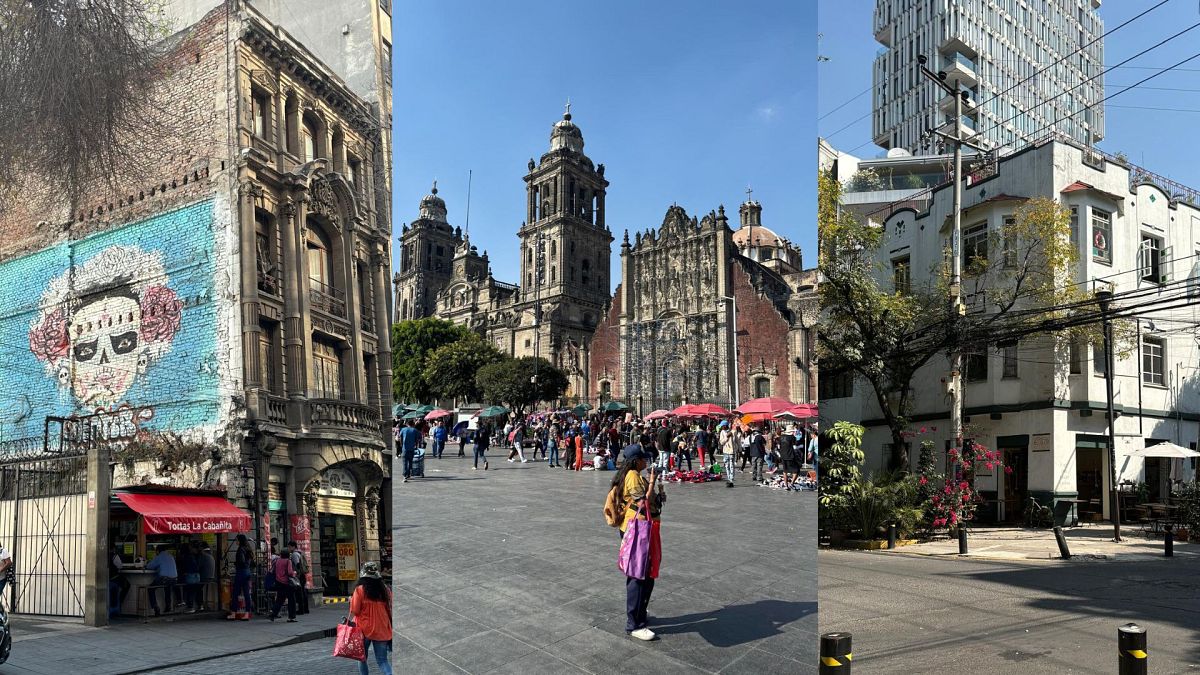Last week, residents of Mexico City staged a fierce protest railing against gentrification and mass tourism.
It was fueled by government failures and active promotion to attract digital nomads, according to experts, who said tension had been mounting for years.
The criticism comes after Mexican President Claudia Sheinbaum alleged that Friday’s protest was marked by xenophobia, reviving a debate over an influx of Americans in the city.
Many Mexicans say they’ve been priced out of their neighbourhoods – in part because of a move made by Sheinbaum in 2022.
As the Mexico City mayor, she signed an agreement with Airbnb and UNESCO to boost tourism and appeal to digital nomads despite concern over the impact short-term rentals could have.
If you want to visit Mexico City and other destinations in the country, here’s how to tread lightly during your trip.
‘Gringo: Stop stealing our home’
On Friday, a largely peaceful protest of hundreds of demonstrators marched through tourism centres of Mexico City with signs reading “Gringo: Stop stealing our home” and “Housing regulations now!”
The frustrations were built upon years of mass tourism and rising rent prices in large swathes of the city.
The influx of foreigners began around 2020, when Americans arrived in Mexico City in big numbers to work remotely, dodge coronavirus restrictions and take advantage of cheaper living costs.
In the years since, choice neighbourhoods like Roma and Condesa – lush central areas dotted with cafes and markets – have grown increasingly populated by foreign tourists and remote workers.
Holiday rentals see housing prices soar in Mexico City
Protesters’ cries against government failures were echoed by experts, who said that surging gentrification is a product of both a shortage of affordable housing in the city and the longtime government failures to regulate the housing market.
Controls, meanwhile, have been marked by a lack of enforcement, which developers and travel services companies like Airbnb take advantage of, Antonio Azuela, a lawyer and sociologist, said.
Today, more than 26,000 properties in Mexico City are currently listed on Airbnb, according to Inside Airbnb, an advocacy organisation that tracks the company’s impact on residential communities through data.
That’s compared to 36,000 properties in New York City and 19,000 in Barcelona, where protests have also broken out.
The result in Mexico City is that rent and living prices have soared and English has been increasingly common on the streets of those areas. Some groups have described the phenomenon as a sort of “neo-colonialism.”
How to be a responsible tourist in Mexico City
Rather than seeing Mexico City as off-limits, travellers should still feel welcome provided they visit in a way that benefits the local community.
As a rule, it is more sustainable to stay for longer periods in a destination, rather than hopping from place to place. This way, you are likely to see more diverse areas of a city rather than joining the crowds at the big-name attractions.
In Mexico City, there are a whopping 150 (or more) museums, so there’s really no excuse for just sticking to the most renowned.
For example, if you’ve already visited the National Museum of Anthropology, head out to the Museo de Sitio Xólotl.
This on-site museum gives access to ruins at Tenayuca – reached on bus line 3 – with pyramids dating from the 1200s.
Animal lovers can enjoy the National Biodiversity Pavilion (Pabellón Nacional de la Biodiversidad), which opened in 2022 and is dedicated to presenting and preserving natural Mexican biodiversity.
There is also Axolotitlán, the Axolotl Museum within the Tarango Park, which provides a home to several of the protected amphibians on site.
For art enthusiasts, the Olivia Foundation opened to much fanfare during Art Week in February last year.
The exhibition space is principally focused on Postwar Abstraction by female painters. Travellers should note that visits are by reservation only.
Best neighbourhoods to stay in Mexico City
When it comes to accommodation, opt for small, ideally family-run hotels and guest houses. Big chains and all-inclusive resorts are more likely to employ non-resident staff who impart an ‘international’ atmosphere that some guests prefer.
The local tourist board has several recommendations for walking-friendly neighbourhoods that make for a great base – instead of the historic centre or tourist-packed Roma and Condesa areas.
Choose San Rafael for laid-back sophistication, eclecticism and a dynamic art scene or San Ángel, once a distinct town of gardens and orchards, for decadent villas and floral masterpieces.
Coyoacán is a well-known neighbourhood thanks to the Frida Kahlo Museum, but the surrounding tree-shaded streets and market are quieter – plus the day trippers clear out in the evening.
Xochimilco is a similar story. Visitors make a beeline for the eye-popping boats that punt down the canals. But stick to the streets and you’ll find a Mexican Venice of bridges, alleys and canalside cafes – and an outdoor gallery of street art.

